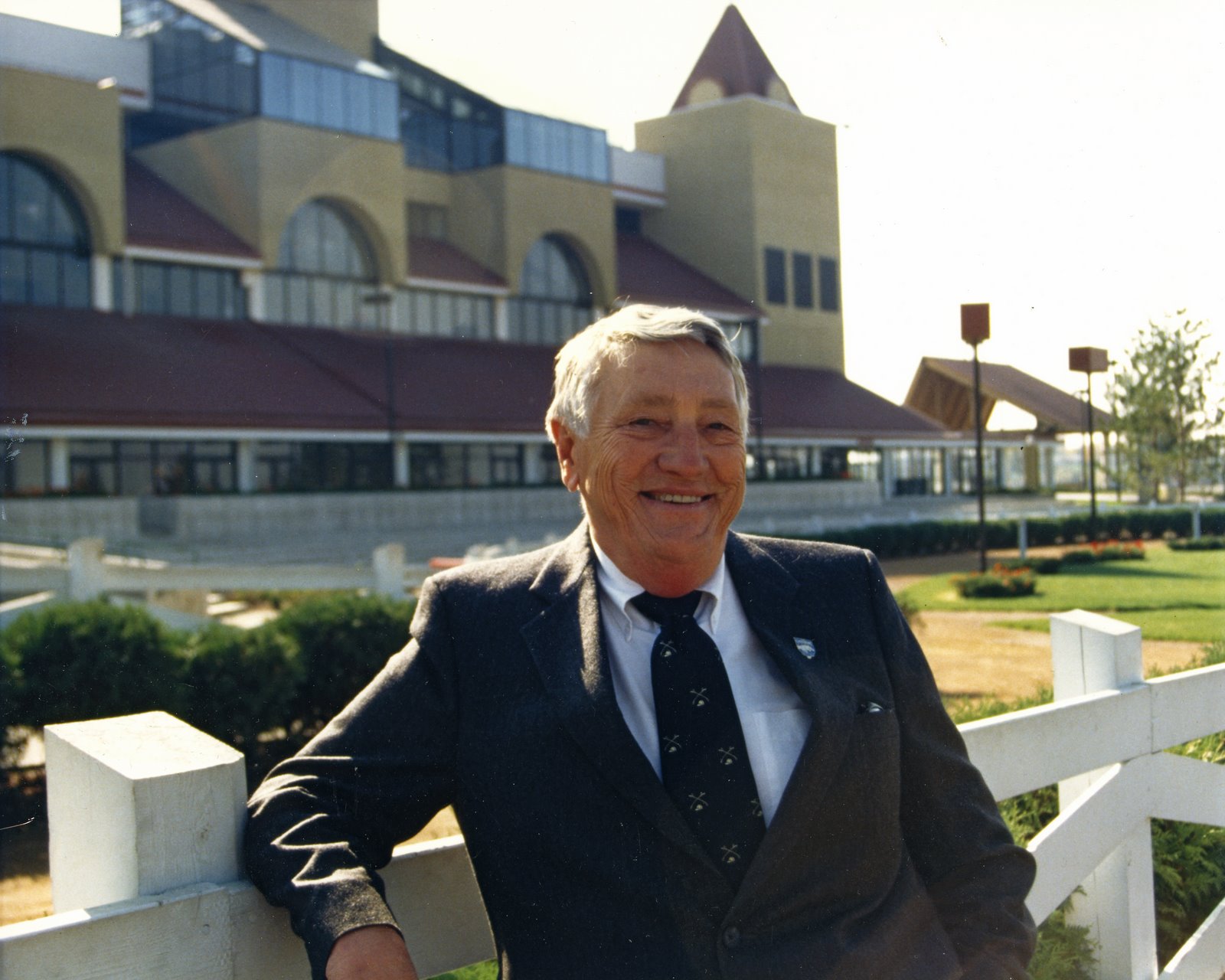The room, a library with cherry wood paneling, invites you to relax, ruminate, reminisce and revel in those early, giddy days of Minnesota racing. There is a wood burning fireplace in the center surrounded by paintings, plaques, photographs and memorabilia that welcomed horse racing to the state in 1985. There is a painting of Canterbury Downs above the fireplace.
The burgundy leather furniture _ the sofa, chairs and ottoman _ once occupied the executive office at the racetrack. There is a coffee table in front of the couch with racehorses painted on it. There is a porcelain horse, a gift from the NAACP. Elsewhere, there is a thoroughbred painting, a gift from the brass at Santa Anita, original partners in Canterbury Downs.
the couch with racehorses painted on it. There is a porcelain horse, a gift from the NAACP. Elsewhere, there is a thoroughbred painting, a gift from the brass at Santa Anita, original partners in Canterbury Downs.
Move about the room and you will find an antique painting of a jockey, a cancelled postcard dated June 26, 1985, announcing opening day ceremonies. There are numerous mugs with the track’s name or commemorating the St. Paul Derby. There are glasses with the track logo, cigarette lighters and matches bearing the track’s crest. There is the plaque honoring his 1996 induction into Canterbury Park’s Hall of Fame.
This is the room that Brooks Fields and his wife, Lucy, put together five years ago when they occupied their new condominium in Edina. They called it the Canterbury room.
Years after his departure from the failed Canterbury Downs, the people, the sport and his days as the first president/CEO of the track still occupied a special place in Brooks Fields’ heart and memory.
“He loved Canterbury Downs,” his daughter, Sarah Nessan said. “But his real passion was the people there. He always spoke of everyone there the same way, from a man who parked the cars to someone else who swept the floors. They were all equally important to him.”
Fields was proud of bringing racing to Minnesota and his work with minorities at Canterbury, including the mentally challenged. “He was also delighted that so many employees remembered him when he came back,” Sarah said. “He loved the way the Sampsons (the current track owners) treated him in such a nice way whenever he was there. He was very humbled by it.”
Although he had no background in racing, Fields is arguably the father of the sport in Minnesota. He was the man at the center of the effort that created Canterbury Downs. Fields, a lover of people, of the racetrack and life in general, died on June 23, 2008.
Building Minnesota’s first racetrack was an unlikely venture for a man 66 years of age and recently retired as executive vice president after 29 years with Burdick Grain Co. Fields and his nephew Brooks Hauser were majority shareholders in Scottland, Inc., a Shakopee land development company that owned the land where Canterbury Downs was built and were approached by Santa Anita executives about building a racetrack.
Fields was the right man at the right time and threw himself into the new project like a man half his age.
As time demonstrated he was truly a people person, able to work with anyone.
“That’s why everybody loved him,” Lucy said. “He was so understanding and tolerant. We all have our faults, our foibles and failings and he accepted that.”
Even when others failed him, when financial errors, misjudgments and questionable decisions forced him and the Santa Anita Operating Company along with other racetrack investors to sell Canterbury Downs in 1990, Fields was willing to move on with his life.
“If I had lost the money he lost, you’d still hear me moaning,” Lucy said. “Not Brooks. He only remembered the good times, the celebrations. He concentrated on all the fun and the joy of bringing racing to Minnesota.”
That man will be honored today with the running of the Brooks Fields Stakes, a race he attended every year. “He was so proud and honored when Frances Genter named a horse, Brooker, after him,” Lucy said. He was also proud of the race that honors him.
Much of that pride is reflected in the Canterbury room and in family memories. “My dad always maintained that (despite what happened) he would do it all over again,” Sarah said.